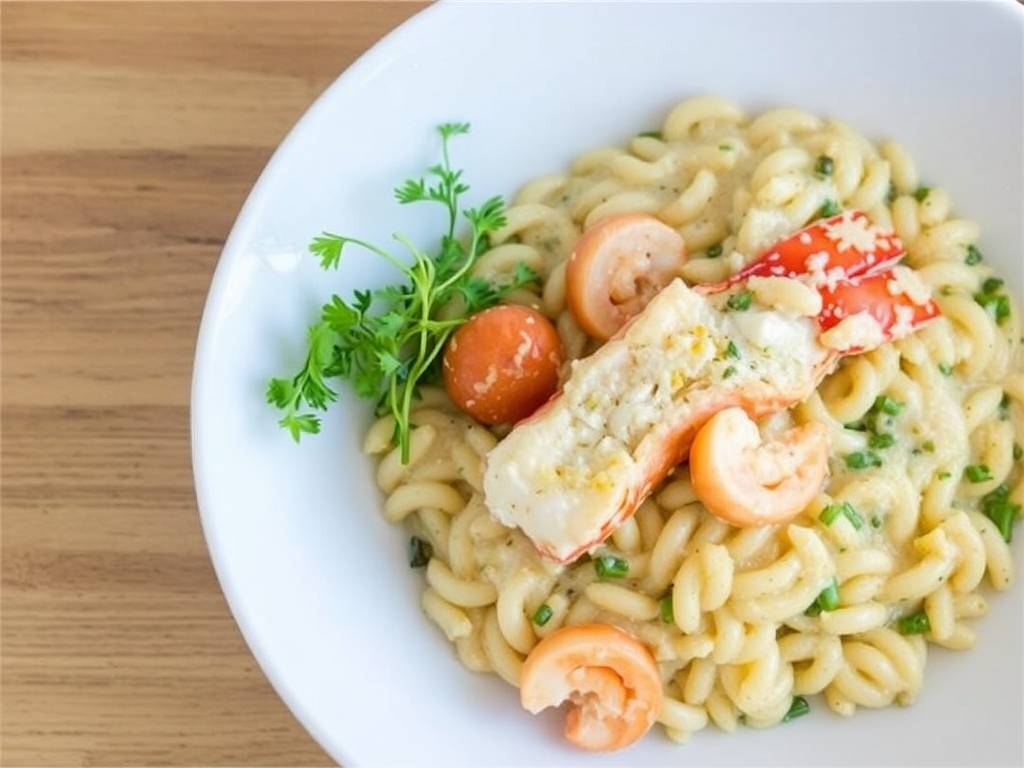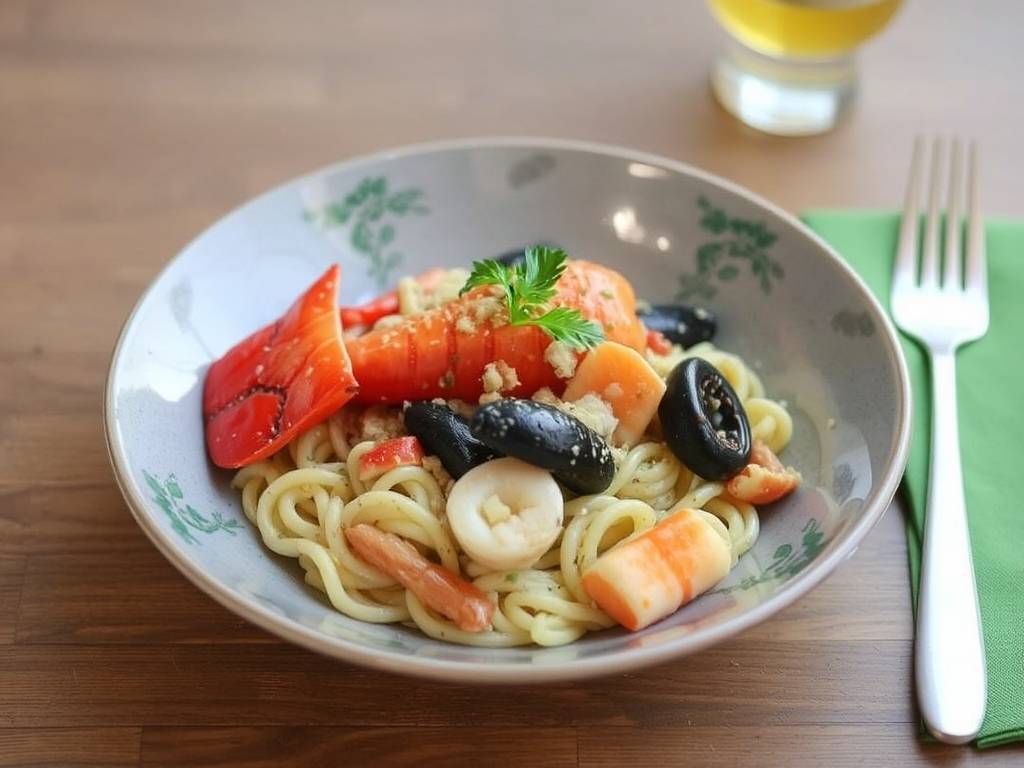The Ultimate Guide to Perfect Lobster Seafood Risotto at Home
There's something truly magical about a well-made seafood risotto. The creamy texture, the rich flavors of the ocean, and the tender morsels of lobster come together to create a dish that feels both luxurious and comforting. Many home cooks are intimidated by the idea of making a perfect lobster risotto, worrying about overcooking the lobster or ending up with a sticky, gummy rice. But I'm here to tell you that with the right guidance, you can create a restaurant-quality lobster seafood risotto in your own kitchen. This comprehensive guide will walk you through every single step, from selecting the best ingredients to mastering the classic risotto technique, ensuring you solve every potential problem along the way.
Let's start with the heart of the matter: the ingredients. For a truly spectacular lobster risotto, quality is non-negotiable. You'll need one to two live lobsters (about 1.5 pounds each), 1.5 cups of Arborio or Carnaroli rice (these short-grain rices are essential for that creamy texture), 4-5 cups of a high-quality seafood stock, one small onion or two shallots (finely chopped), two cloves of garlic (minced), 1/2 cup of dry white wine, 1/2 cup of grated Parmigiano-Reggiano cheese, 3 tablespoons of unsalted butter, 2 tablespoons of olive oil, a pinch of saffron threads (this is a game-changer for color and aroma), and fresh parsley or chives for garnish. Salt and freshly ground black pepper are, of course, a must.

The first crucial step is preparing the lobster. This is often the most daunting part for people, but it's simpler than it seems. Bring a large pot of heavily salted water to a rolling boil. Gently place the live lobsters into the pot and cover. Cook for about 8-10 minutes for a 1.5-pound lobster, until the shells are bright red. Using tongs, remove the lobsters and let them cool until you can handle them. Now, for the "how to extract lobster meat from the shell" part: twist off the claws and legs. Crack the claws and knuckles carefully with a lobster cracker or the back of a heavy knife to remove the meat intact. For the tail, hold it firmly in one hand and, with the other, twist and pull the tail away from the body. Use kitchen shears to cut along the underside of the tail shell and push out the meat. Don't forget the legs! You can roll a rolling pin over them to push out the tiny bits of meat inside. Chop the tail and claw meat into bite-sized pieces, reserving any smaller pieces and scraps.
Now, let's talk about the soul of your risotto: the stock. Never use plain water. A rich, homemade seafood stock will elevate your dish immeasurably. While the lobsters are cooling, you can make a quick lobster stock. Take the lobster bodies (the main shell part) and break them up with your hands or a mallet. In a pot, sauté some chopped onion, carrot, and celery in a little oil. Add the broken shells and cook for a few minutes, crushing them to release their flavor. Pour in about 6 cups of water, add a bay leaf, a few peppercorns, and a sprig of thyme. Simmer for at least 30-45 minutes, then strain. You now have a deeply flavorful base for your "easy lobster risotto recipe." If you're short on time, a high-quality store-bought seafood stock is a decent alternative, but a homemade one is always superior.
With your mise en place ready, it's time to cook the risotto. This is where the magic happens, and understanding the "seafood risotto cooking technique" is key. In a heavy-bottomed pot or Dutch oven, heat the olive oil and 1 tablespoon of butter over medium heat. Add the chopped onion or shallot and a pinch of salt, and sauté until soft and translucent, about 5-7 minutes. Add the minced garlic and cook for another minute until fragrant. Now, add the Arborio rice. This step is crucial: toast the rice for 2-3 minutes, stirring constantly, until the edges of the grains look slightly translucent. This toasting process seals the starch and ensures your rice cooks up creamy, not mushy.

Next, pour in the white wine. It will sizzle and steam—this is what you want! Stir continuously until the wine is fully absorbed by the rice. This deglazes the pan and adds a lovely acidity that balances the richness. Now, begin adding your warm seafood stock, one ladleful at a time. This is the fundamental principle of "how to make creamy risotto." The key is to add the next ladle of stock only when the previous one has been almost fully absorbed. Stir frequently, but not necessarily constantly. This gentle agitation helps the rice release its starch, creating that signature creamy sauce without the need for excessive cream.
About halfway through adding the stock, stir in your saffron threads. They will impart a beautiful golden hue and a distinct, aromatic flavor. Continue the process of adding stock and stirring. After about 15-18 minutes, start tasting the rice. You are looking for an "al dente" texture—soft on the outside with a slight firmness or bite at the center. It should be creamy and loose, not stiff.
Once you've reached the perfect "al dente" stage, it's time for the final touch: the "mantecatura." Remove the pot from the heat. Stir in the remaining 2 tablespoons of cold butter and the grated Parmigiano-Reggiano cheese. This step, called "mantecatura," is the secret to an extra creamy and glossy risotto. The off-heat agitation with fat creates a beautiful emulsion. Now, gently fold in the reserved lobster meat, being careful not to break it up too much. You just want to warm it through. Let the risotto rest for a minute off the heat; it will thicken perfectly.
To serve, spoon the risotto into warm bowls. Garnish with a sprinkle of fresh parsley or chives, a twist of black pepper, and perhaps a small lobster claw on top for a dramatic presentation. The result is a "gourmet lobster risotto" that is the epitome of comfort and elegance. The rice will be creamy and rich, each grain distinct, and the lobster will be tender and sweet, perfectly complementing the savory broth. Remember, a great risotto should flow slowly onto the plate, a texture Italians call "all'onda" (wavy). You've not just followed a recipe; you've mastered a technique that will allow you to impress on any occasion. So go ahead, embrace the process, and enjoy the incredible reward of a homemade lobster seafood risotto.






发表评论